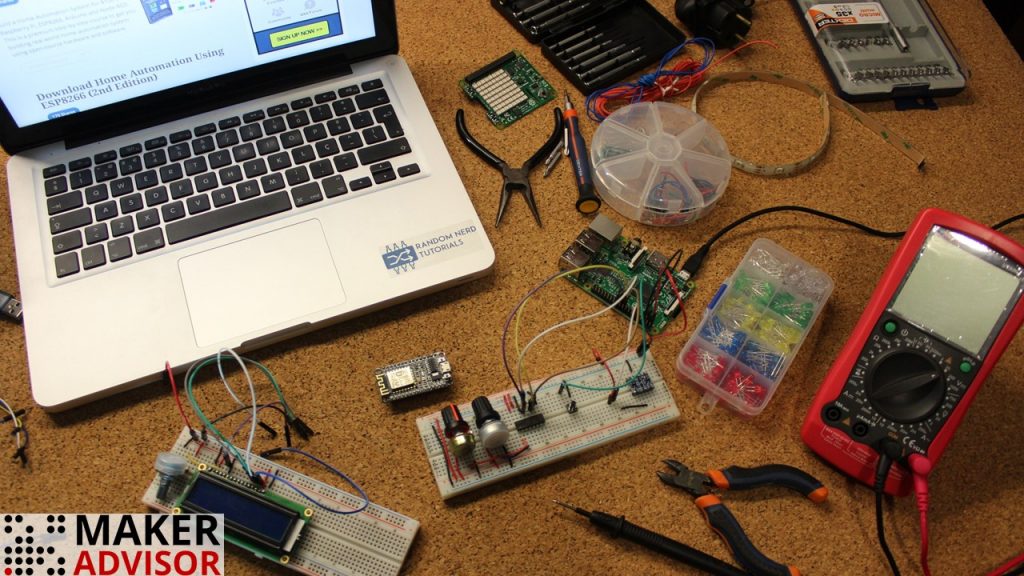
If you’ve decided to start learning electronics and you’re looking to set up your own hobbyist electronics lab, you’re in the right place. This guide will help you learn how to set up an electronics lab and find the right tools and equipment.
Setting Up an Electronics Lab
When you’re just getting started, it is difficult to know what tools are or aren’t essential, or what are the best tools.
This list contains a lot of different tools. You don’t need to buy them all at once. Otherwise, you’ll end up buying stuff that you don’t need or stuff you’ll never use! Start by purchasing a few essential tools related to the projects you want to do. Then, as your lab, and your expertise starts growing, upgrade you lab with new tools.
Finding the Right Spot
Making electronics projects is a lot of fun and it is nice to have a specific space to be our lab, a space where we have all we need to make our projects. It doesn’t have to be a full room or a big space. But it’s important to have “the” space! A space that is ours and where we can have all things we need to get the most of making electronics projects.
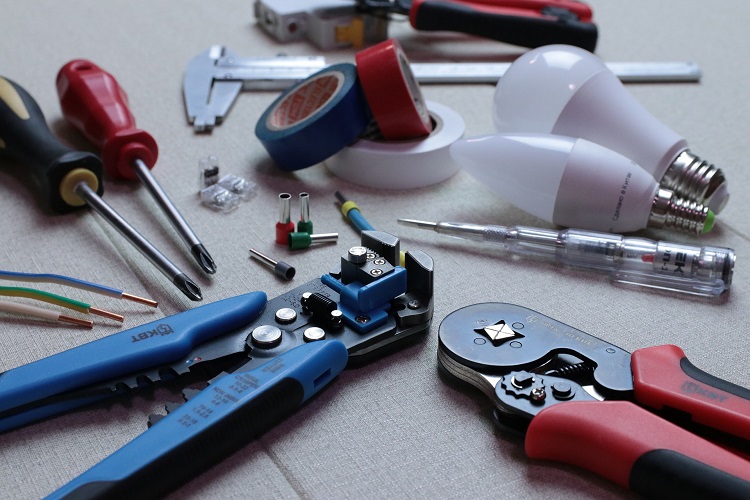
Once you have your spot, you need to set it up! We’ll show you some essential tools to set up your own electronics lab.
Multimeter
A multimeter is a measurement tool absolutely necessary. It helps you troubleshooting your circuits. Sometimes your circuits may not work because of faulty wires. Checking the connections with the multimeter can save a lot of time.
If you’re looking for one, we truly recommend an auto-range multimeter. The auto-ranging is a great advantage, because it saves you of the hassle of having to guess which range of value the electrical characteristic you’re measuring falls under. Check the best multimeters under $50.
Soldering Station
Having a soldering station in an electronics lab is absolutely necessary, even if you don’t usually build permanent circuits. Many electronics components don’t come with header pins or breadboard-friendly pins attached. In these cases, you’ll need to do some soldering work. If you don’t do a lot of soldering, a simple soldering station will do the job. However, we really recommend getting a good soldering station with enough wattage and adjustable temperature. A good soldering station will last your entire life.
If you’re looking for a soldering station, you may be interested in reading our suggestions about the best soldering irons for beginners and electronics hobbyists.
If you are limited in terms of space, you may want to get a small portable soldering iron. We really recommend the TS80 mini portable soldering iron. It is as good as a regular soldering iron and occupies very little space. Read our review: TS100 Soldering Iron Review – Best Portable Soldering Iron.
Soldering Accessories
Besides the soldering station you also need some soldering accessories:
- Solder: the easiest type to work with is 60/40 lead/tin.
- Solder wick: the wick soaks up molten solder, it’s useful to clean the excess of solder.
- Cleaning sponge: to clean the tip of your iron while soldering.
- Tip tinner: used to clean the tip of the soldering iron.
- Diagonal cutting pliers: useful to trim the leads after soldering.
- Helping hand: to hold your components together while you solder.
- Flux pen: the flux pen content aids the flowing of a lead-free solder.
- Solder vacuum pump: this tool helps you removing the solder left when desoldering components.
For more soldering accessories, take a look at the Top 10 Soldering Accessories and Tools.
Bench Power Supply
A voltage supply may not be essential in simple and beginner projects, but it is a really practical tool when it comes to circuits. It allows you to power your circuits before they are finished, to test individual circuits, to experiment, etc. Nowadays, simple bench DC power supplies aren’t that expensive anymore. In fact, you can get one for less than $100. Read the best bench power supply for electronics hobbyists buying guide.
Oscilloscope
An oscilloscope is a great tool for debugging and better understand what is going on with your circuits. Unlike a multimeter that only shows the voltage at a specific moment, with an oscilloscope you can see what’s happening with the voltage over time. We have an Hantek DSO5102P Digital Storage Oscilloscope (DSO) and it is a great entry-level oscilloscope for students, beginners and DIYers (read our review).
Hantek DSO5102P Digital Storage Oscilloscope 2Channels 100MHz 1GSa/s
$239.99
Oscilloscopes are expensive. A cheap regular bench oscilloscope costs at around $300. However, there are very cheap oscilloscope kits that can perform the most basic functions for a very low price. For example, the DSO150 low cost oscilloscope may cost between $25 and $40. This oscilloscope doesn’t replace a real oscilloscope, but it is good enough if you’re just getting started (read our review).
Original JYE Tech Assembled DSO-SHELL DSO150 Oscilloscope
$25.99
Wire Stripper
A wire stripper is essential in an electronics lab as you’ll have to strip cables many times. You can get a simple wire stripper, but we absolutely recommend you a self-adjusting wire stripper/cutter instead. It is very easy to use, adapts to a wide variety of cables and works perfectly.
Needle-nose Pliers and Wire Cutter
A needle-nose pliers is always handy. You should absolutely get one. Wire cutters are also absolutely essential. You can take a look at these 5 pliers that cost less than $5 each.
Hot Glue Gun
Hot glue is great. It is very handy for a wide variety of applications if you want to make something stick together. In electronics, hot glue is perfect to fix your circuit into a surface or to attach cables together. As the glue is an insulating material, it can help you protect your circuitry. Check our post about hot glue guns: best hot glue guns – our budget and top picks.
You may also like: 4 hot glue tricks for your electronics projects
Precision Screwdriver Set
There are components with really small screws and with specific shapes and so, at some point in your projects, you’ll need a precision screwdriver. We recommend you getting a set take comes with extension bits because you’ll need all of them sooner or later. Take a look at best precision screwdriver sets – our budget and top picks.
Tweezers
Tweezers are very useful to manipulate the small electronics components. The tweezers below have an extremely small and pointed tip, which is perfect for electronics.
Rotary Tool and Accessories
A rotary tool is great if you like to give your projects a good finished look. This tool is good for working with acrylic, plastic, wood, and more. This tool is not essential for your lab, but it can be very useful.
3D Printer
A 3D printer is not an essential tools in an electronics lab, but it is very useful. With a 3D printer you can take your projects to the next level by building personalized box enclosures, robot parts, and much more. There is a wide variety of 3D printers for all sorts of budgets.
We have a Creality 3D CR-10 3D printer and we’re really happy with its performance – you can read our review about the Creality CR-10 3D printer here. If you’re on a lower budget, you can take a look at these 3D Printers under $250.
Recommended reading: Best Hobby 3D Printers – Under $250
Assortment Kits and Electronics Components
Besides the previous tools, you need some electronics components to get started. It is easier and cheaper to get started with assortment kits. Here’s some of the assortments kits we recommend:
Breadboards
Breadboard are a must for prototyping and testing your circuitry. Once you start doing electronics projects, you’ll realize that you’ll never have enough breadboards for your projects. Check the breadboard options in our Tools page. There are also breadboard kits that come with other useful accessories for the breadboard.
Jumper Wires
Jumper wires are really handy to connect components together. We recommend getting female to female, male to female, and male to male jumper wires.
You should also get hookup wire that is useful for a wide variety of applications.
Resistors
You’ll need resistors in most of your electronics projects. Get a 1/4 watt resistors assortment. These will meet most of your needs. Check the best resistor assortment options in our Tools page.
LEDs
LEDs are awesome and are always a good fit in all electronics projects. Get an assortment with several colors and sizes. Check the LEDs assortments in our Tools page.
Potentiometers and Pushbuttons
Potentiometers and pushbuttons are a must. You’ll use them often.
Other Electronics Components
It can also be useful getting kits with transistors, diodes, and capacitors.
Varied Sensors and Modules
There are a wide variety of sensors and modules compatible with Arduino and other development boards. You can get some of them for a very reasonable price. Check the all the sensors options at our tools page.
Arduino Starter Kit
An Arduino Starter Kit is the easiest way to start with digital electronics and programming. We have a full post dedicated to Arduino Starter Kits that you can read here.
Cabinet organizer
A cabinet organizer is essential so that you have all your components organized. We’ve put together a list with the Best Storage Organizers For Electronic Components and Parts.
Maker Advisor Tools Page
You may also find useful taking a look at our Tools page here. We share the components and tools we use more often, and compare the price on different stores, so that you can get the best price.
Wrapping Up
Well, it’s a lot of stuff for setting up your electronics lab. However, you don’t need to get overwhelmed. Electronics components kits usually come with several component units at a very low price. Additionally, you don’t need to buy all these tools at once! You can start with a small Arduino Starter Kit and some essential tools, and then upgrade your lab later on.
What tools do you have in your electronics lab or want to get for your lab? Let us know in the comments section below.
Stay Tuned
Looking for more great deals on electronics and tools? Make sure you subscribe here to catch upcoming deals and score some extra savings on your favorite gear!
[Recommended Course] Learn ESP32 with Arduino IDE
Register in our brand new ESP32 course with Arduino IDE. This is our complete guide to program the ESP32 with Arduino IDE, including projects, tips, and tricks! The registrations are open, so sign up now.
Other RNT Courses
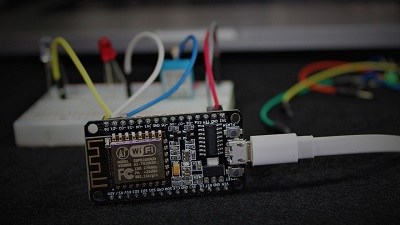 [eBook] Home Automation using ESP8266 »
[eBook] Home Automation using ESP8266 »
Build IoT projects and home automation gadgets with the ESP8266 Wi-Fi module.
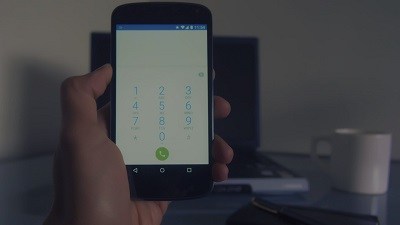 [Course] Build a Home Automation System »
[Course] Build a Home Automation System »
Build a home automation system using open-source hardware and software.
 [Course] Arduino Step-by-Step Projects »
[Course] Arduino Step-by-Step Projects »
Build 25 cool Arduino projects with our course even with no prior experience!












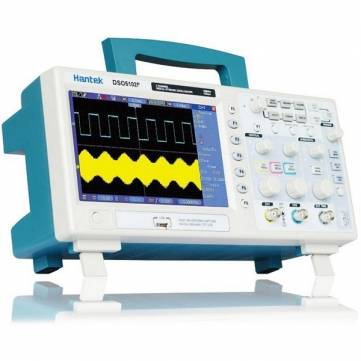
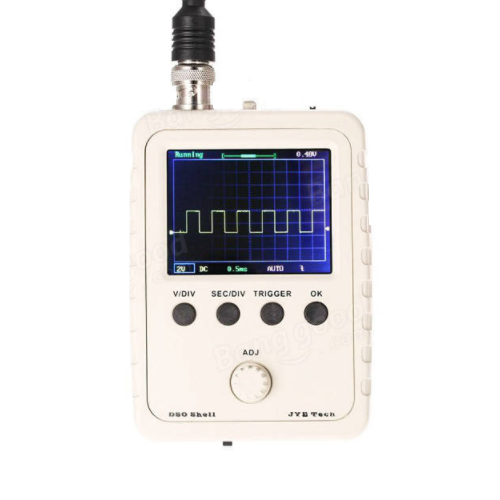








































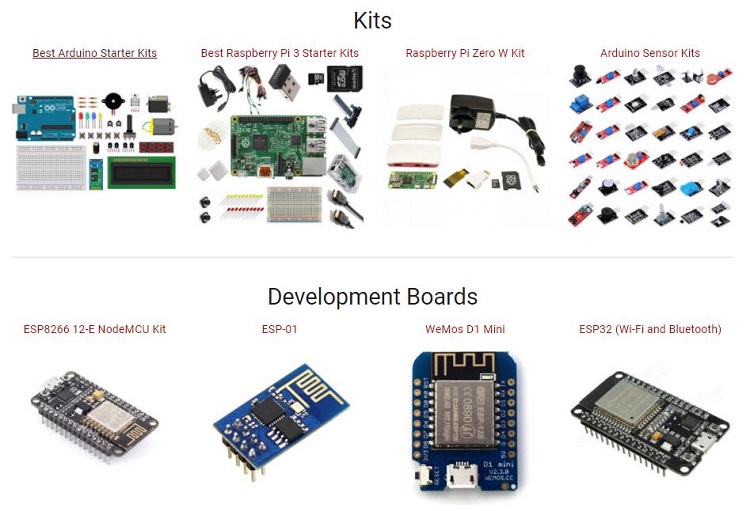
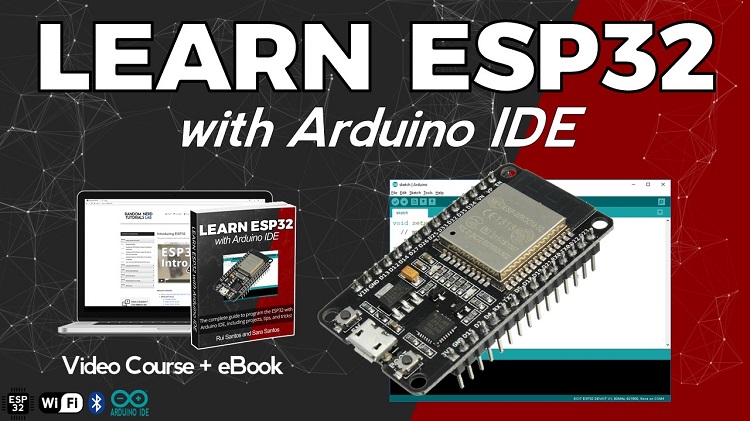
You did not cover Oscilloscopes???
Hi Andrew.
This article will be in constant update. We intend to add a section about oscilloscopes and other tools soon. So, stay tuned! 🙂
hie can you sent me a word document with electronic equipment list for me to start a pcb manufacturing and design on my email
Hi Ralph.
We don’t sell electronic equipment.
We just recommend online products from other stores.
Regards,
Sara 🙂
Thanks , it is very good page , it took me a while to think and order lab components and then while i was thinking that did i miss anything and i found your page and it helped me and sorted few things, thanks for links as well , they are quiet good if somebody want to make low cost lab.
Suggestion from me is to stay away from ebay and amazon as there is lot of fake stuff there which does not work. i had to pay little more but i ordered from authorised distributors where i could easily get 1 year warranty for most of the stuff.
i still bought non critical stuff from ebay such as tweezers , resistor and capacitor its etc.
High Sara, I was just wonder are you in any relation to Rui Santos…. brother … maybe…. I ‘ve been his fan well over 5 years….. keep up the great work !
Cheers
btw I’m struggling, still with the “purchasing” issues over at amazon…. the customs here in Serbia are giving me hell of a time….
Hi Vladimir.
I’m Rui’s girlfriend and we work together on the RNT blog since 2015 (and now on Maker Advisor) – read more here.
I’m sorry you’re having trouble with customs in your country, unfortunately there’s nothing we can do about that 🙁
Thanks for following our work throughout all these years 🙂
Regards,
Sara 🙂
Sara: What is the possibility of your providing your great articles as a downloadable PDF file? That way, I am able to share specific articles and/or information with other people I know who would be appreciative in receiving a particular article that pertains to their individual interests from me.
Is this possible? Let me know, OK??? THANKS!!!
/
Hi Austin,
At the moment, our guides are not available in PDF format.
The best way to share our articles with someone is sharing the URL of the article you are interested.
Thank you for your interest in our work.
Regards,
Sara
Walmart sells a very nice rework soldering station for $63.95:
walmart.com/ip/2in1-Lead-Free-Soldering-Station-Hot-Air-and-Iron-852d-SMD-Rework-Station-Digital-Welding-Tool-with-4-Nozzle-and-5-Tips/170580724
Hi. Thanks for sharing.
That is a great soldering station. We have that on our lab, and we really like it! 🙂
Hi!
Thanks for your leads to find essential tools!
Kindly advice ESP series just only for experimental basis micro controllers or all are used to develop industry standard automation product already available in market place?
You’ll need to see your projectrequirements and if it fits your needs/countries regulations.
Regards,
Rui
very well done article, thank you
Thank you 🙂
These short how-to web pages are great. Now for a how-to I need: I use my workbench for my tools and stuff, but I have to put it away out of sight fairly often if I use my table saw or other tools that make sawdust. Something that would fold down and make a box 36″ x 24″ (or maybe 1.0 meter x 0.75 meter and 12″ or 30cm tall would be nice. A lid to keep the sawdust out would be good, too.
I’ll look at Instructables and other sites also and maybe I’ll find something.
Thank you for the articles and books.
Hi
Thank you for the info, helped a lot.
🙂
You’re welcome! 🙂
An ESD mat is important since many microcontrollers are static sensitive as well as a ESD safe soldering iron
I think these recommendations are exaggerated if you do want to set up an electronic lab as a professional, maybe, bus as an aficionado it is far too much. To define what you need to start you first need to define what is your objective. Keep adding equipment on as needed basis.
Great Job
Very interesting article. However, for those like me who are from Europe, it is not practical to purchase tools from the USA, due to customs and VAT which is imposed upon entry. So some links for items that are available via Amazon.de or Amazon,co.uk would have been nice to see.
Also Hantek now make newer models of oscilloscope; I just bought the DSO 4102C and really like it.
Two other things you could have added are (a) a solder wick to remove solder (or alternatively a solder sucker) and (b) not sure what they call it but its like a clip that you attach to the leg of a component when soldering, to draw off the heat and avoid damaging the component.
For the rest of the items, I like what you listed and you have given me some good ideas. Thanks!
Pretty cool list of stuff.. I got lots of that stuff from garage sales and whatnot for real cheap.. good deals out there…. I think CNC mill should be on list instead of 3d printer. I bought a mini one for under $250 and i can now make my own PCBs (with everything except Plated Through Holes). Not really an essential item but having the ability to produce a rapid same day prototype is neat.
Hi,
It was a great read and definitely the best article on recommendations to set up your work space… I would like to know where can I find a book having projects not related to digital electronics… I am not good with programming and stuff so I would like to start with the very basic stuff that doesn’t involve arduino and rapsberry pi… Thank you any help would be appreciated
Hi …
Thanks So Much
good job , thank you sara we looking for more
Very nice list of essentials. I always find a logic probe handy when troubleshooting circuits. You get a quick confirmation of the logic state of a pin. It would be a nice addition to your list.
Hi David.
Thank for your comment.
Yes, a logic probe can be very handy, I’ll add that tool to our list in the next update.
Regards,
Sara
Bom Trabalho que estão a fazer! Muito Bom! Principalmente a actualização da página. Continuem o Bom Trabalho!
Hey,
Your content is really very helpful for the electronics lab setup. We don’t need to search for all the products from scratch, you eased everything. Thanks a lot!
Regards,
Betty
Thanks!
I just read out your article and enjoy this first to last. I got some cool idea about setting up my own electronics lab from your article really its help me a lot for building my own electronics lab.
Thanks for your amazing tips.
I read your post and got some brilliant ideas about setting up my own electronics lab. Really it’s a cool idea and I like this idea very much. Now I can easily customize my electronics lab easily.
Thank you.
By reading your article I got some brilliant ideas about the build up my electronics lab. Really your idea was awesome hope I build up my electronics lab using your instruction.
Thank you. Keep Sharing!
Hi, I want to set up an electronic lab and i did find this page extremely helpful. I might need some help so I hope you are mostly available. Thank you guys very much.
I really liked your article and I enjoy reading it
Thank you!
Hi,
I’m also a hobbyist and need to move to a new location. Since I need to move I have to completely re setup my lab. There are a few things I’m gonna change. But I need some guidance on provisioning my measuring equipment. Thru the years I’ve gathered a lot high quality old measuring equipment. Since a lot of these have special control ports is it handy for the amateur to add these?
Like: RS-232, RS485, IEEE488, HP, IB, LAN RJ45
Hi Michael,
IEEE488 (aka HP-IB or GPIB) is pretty expensive for a hobbyist. For example, the National Instruments USB to IEEE488 interface is several hundred dollars (US). You can build your own or buy a knock-off but the best feature of IEEE-488 is its reliability (it’s a fully hand-shaked protocol) so you might not want to use anything but the real NI interface. Even the cables are expensive – $50 to $100 each. But if your test equipment doesn’t have any other interface besides IEEE-488, then yes, IEEE-488 will be handy for you.
HTH,
Bob
Great list!
I design and build hardware and firmware in my day job but will be retiring soon. This list will be great for setting up my home lab. Thank you!
What is the best way to learn programming for the projects on ESP, Raspberry Pi etc.?
Actually I have no prior experience of programming
Kindly answer please
Hi.
Take a look at our other website: https://randomnerdtutorials.com/
We have many tutorials showing how to program those boards.
Regards,
Sara